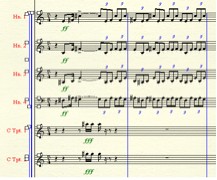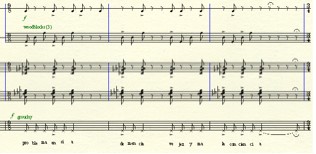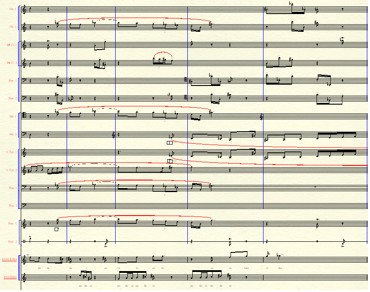Picture speaks a thousand words. So can words and sentences speak a song of a thousand musical notes? Intersection between literature and music raise such questions as: Can an orchestra narrate? Does music have a past tense? Is an opera libretto like a movie script? Do certain literary texts invite musical adaptation? Is poetic rhetoric equivalent to musical rhetoric?
This project is interested in examine the relationship between language and music in a broader perspective that can be related to our daily life. While much work had been done in analyzing the close relationship between literature and music, there is much room to discover relationship between day-to-day language and contemporary music. While the composers think about the meaning of the music, we will design an environment that could transform any written sentence into a music composition.

The voice parameters, as timber, rhythm, changes of velocity and pitch will be basically what define the final result. Using a convolution process, that means a mixing analysis of the sound parameters and composing a specific music data base we will obtain a meaningful collage as a real time composition.

Process
1. The user speaks on a micro and a computer analyzes what kind of timber voice is incoming: “Spectral Dynamic Involution”. Automatically the computer knows what instrument would be closer to the user voice, e.g. a nasal voice with a powerful 3rd harmonic could be corresponding to a bassoon sound.

2. The computer gets the introduced words and categorizes them in different compartments: nouns, verbs, adjectives…Each of this word would be assigned to categories and linked with the Music Data Base (MDB).
3. The MDB is previously composed thinking on the principal structure of the feelings music language. These tracks are composed for each instrument as solo.
One of the most effective resources in the Film Music Language is the 4 psycho-categories.
a. Imposing feeling: huge language, slow motion, intense, dotted note values, instrumentation based on brass instrument.

b. Tenderness: lullaby style, high pitch, slow and undulatory motion.

c. Activity: optimistic feeling, fast motion, ascending melody, easy rhythms

d. Sadness: Complex harmony and counterpoint, rich instrumentation, very low motion, middle-low pitch, circle music motive, chromatic descending motion.

4. Processing a Real Noise: If any word in sentence is recognize with a real sound embodied in the RNDB (real noise data base), then it will convolve with the other parameters, e.g. bird = bird singing noise. If not, this will be refused.

Project by:
Carlos D. Perales, Eng Tat Khoo
